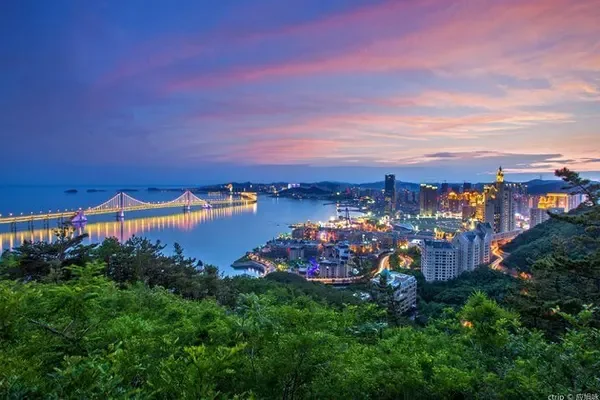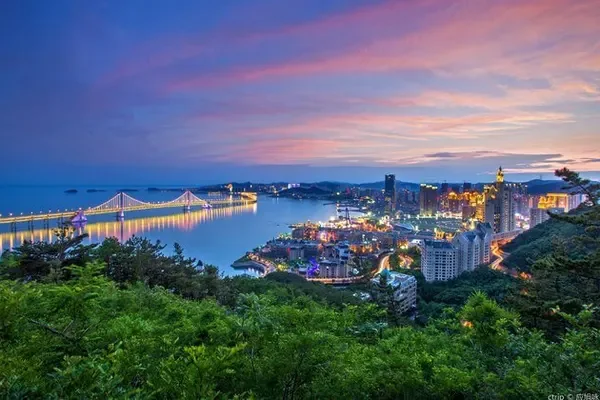Lop Nur, a place name that makes people feel excited when they hear it, it is the site of my country's first atomic bomb test, and it is also the site where Peng Jiamu's scientific research disappeared; It used to be a paradise with herds of cows and horses, surrounded by green forests, and clear rivers, but now it has become a "sea of death" with hundreds of miles of desert and thousands of miles of Gobi; Lovers dream of crossing destinations. There are too many mysterious and even awe-inspiring legends circulating here, attracting the attention of countless people who dare to explore, but it is never easy for people to see its true face.
Lop Nur is located in the southeast of Xinjiang, the lowest point in the eastern part of the Tarim Basin, and the easternmost edge of the Taklamakan Desert. The Kongque River, Cheerchen River, Shule River and other rivers converge here. It used to be the second largest saltwater lake in my country, with an area of about 2400-3000 square kilometers. Lop Nur is also called Lop Nao (nào), which is a Mongolian phonetic translation, meaning a lake with many waters. The "Shan Hai Jing" calls it "Youze". Laolanhai, Furihai, Linhai, Luopu Pool, Luobu Pool and other names.
However, the Lop Nur that is commonly referred to now is actually the desert area of Lop Nur. It starts from Yumen Pass in the east, reaches the desert road from Ruoqiang to Korla in the west, starts from the Kuruktag Mountains in the north, and ends at the foot of Altun Mountain in the south across Xinjiang. and the vast Gobi wilderness in the two provinces of Gansu. Of course, there is also the theory of Lop Nor in a narrow sense, which refers to the center of this area, the lowest-lying lake basin before it dried up in the 1970s, the so-called "Earth of the Earth" with a bottom area of about 1,200 square kilometers and a shape like a big ear.

Lop Nur in a broad sense

Lop Nur in a narrow sense
Due to the large area of the Gobi desert in Lop Nur, the harsh natural conditions, and the military restricted area and the wild camel nature reserve, there is very little information that can be found on the Internet. From the limited information, we found that we can go to the big and small South Lake for an expedition. , and then along the S235 provincial road, through the Lop Nur area.
On October 16, 2020, go to Xiaonan Lake from Hami City to find out, and return to Hami in the evening; on October 17, depart from Hami again, visit Danan Lake, leave Danan Lake at noon, cross half of Lop Nur, and arrive at Lop Nur Town at night Check in at the hotel; depart from Lop Nur Town on October 18, continue crossing the second half, arrive at the junction of S235 and G315 at noon, successfully complete the crossing, and arrive at Huatugou at night.
The Big and Small South Lakes are located in Nanhu Township, Yizhou District, Hami City. This should belong to the Lop Nur desert area in a broad sense. In the past millions of years, it may have been a lake, but now there is not even a drop of water.
Looking at the terrain, Xiaonan Lake does look like a big pit, but this pit is quite large, with a radius of more than ten square kilometers. If there is water, it should be a fairly large lake. According to the introduction, Xiaonan Lake is divided into two pit areas, East and West, which are 5 kilometers apart. The Yadan landform in the east area has been eroded by wind and has strong lines, while the west area is pure, quiet and charming. They are two completely different styles.












Here are not only the pictures and the truth, but also the video:
We set off from Hami. Since we didn’t have the exact route and direction, we had to ask questions as we walked, explored and moved forward. We walked to the vicinity of Dongkeng near noon. We were attracted by the beautiful scenery in the pit, and we walked and admired it. On the west side, find a side road where you can drive to the bottom of the pit, and slowly drive down. Halfway through, you find that the bottom of the wheel is soft. After returning to deal with the stuck car, after more than two hours of hard work, the two cars were driven out of the soft sand area. At this time, the sun had already set, so I had to give up the idea of going to Xikeng area and return to Hami by the same road.









Arrive at Great South Lake the next morning. Danan Lake is a Gobi Canyon with a width of 5-8 kilometers and an extension of dozens of kilometers. There are various rare Yadan landforms in it, which is very spectacular. We learned the lesson of the previous day and walked about five kilometers inward. We met a convoy that had camped there the night before. We stopped at a place with rich Yadan landforms, enjoyed taking pictures, and drove back at noon. S235 Provincial Highway, heading towards Lop Nur Town.















Great South Lake also has a video:
The scenery you can see through Lop Nur is relatively boring compared to other places, because there is only the Gobi Desert known as the "Sea of Death", and you can't even see a bird, except when entering Lop Nur and when you are about to pass through Lop Nur, You can see some green, the rest of the road is basically the Gobi desert and the saline-alkali land at the bottom of the lake. Everyone is familiar with the desert scene. There is a big difference in dryness and cracking. This may be a phenomenon that only exists in Lop Nur.





Of course, compared with the crossing of the Ali Dabei Line in Tibet, crossing Lop Nur is relatively simple. You only need to go from north to south along the S235 provincial road. Although the road conditions along the way are poor and changeable, the total mileage is only 580 kilometers (from Hami to Lop Nur Town, Lop Nur Town to the intersection of Provincial Highway 235 and National Highway 315), there is also Lop Nur Town in the middle where you can stay and add materials, so crossing Lop Nur is more of a sense of ritual and completing a procedure.

Of course, crossing Lop Nur is not without risk. First of all, although some sections of the road are asphalt roads, there is a long section (nearly 200 kilometers) of saline-alkali road. Sprinkled with water, softened and scraped flat, the road surface is hard and full of potholes. It is easy to blow out tires on sunny days and slippery on rainy days. You must be very careful when driving; the last 200 kilometers are gravel roads, which are paved with sand and stones in the Gobi Desert. Due to the long-term drought, the sand and gravel are soft, and the thick sand and gravel will sink the car. In addition, the car is outdated and the dust covers the sky, so the front and rear cars will be far apart, and the team must keep in touch when traveling.











———End of this section———


